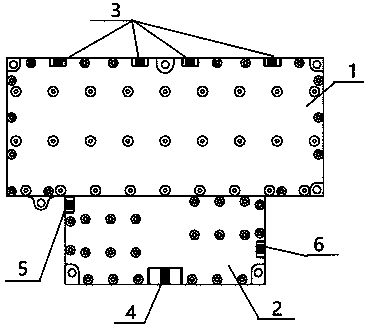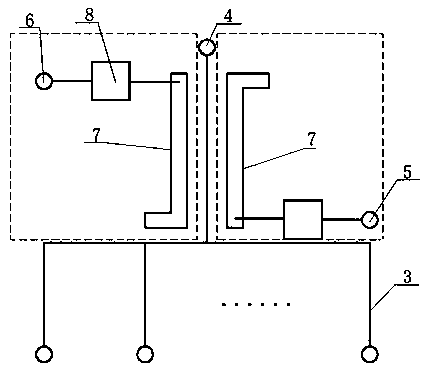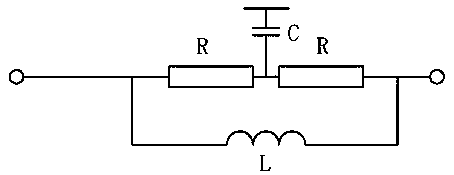Self-feedback radio-frequency soft magnetic power synthesizer
A power combiner and self-feedback technology, applied in waveguide-type devices, electrical components, connecting devices, etc., can solve the problems of increasing the cost of the whole machine, increasing the size of the whole machine, reducing the debugging efficiency of the whole machine, etc., to improve reliability, The effect of reducing the difficulty and cost of debugging and saving internal space
- Summary
- Abstract
- Description
- Claims
- Application Information
AI Technical Summary
Problems solved by technology
Method used
Image
Examples
Embodiment 1
[0025] Example 1: see Figure 1 to Figure 4 , a self-feedback radio frequency soft magnetic power synthesizer, comprising a synthesizer main body, the synthesizer main body includes a radio frequency input terminal 3, a power synthesis circuit, and a synthesis output end 4, the radio frequency input end 3 is multiple, and the synthesis output There is one end 4; the synthesis output end 4 is extended along the signal output direction to form an extension section;
[0026] Also comprise a self-feedback circuit, described self-feedback circuit comprises forward coupling feedback circuit, forward feedback output port 5, reverse coupling feedback circuit, reverse feedback output port 6, described forward coupling feedback circuit and reverse coupling Feedback circuits are located on both sides of the extension;
[0027] The forward coupling feedback circuit includes a coupled microstrip line 7 and a compensation network 8 printed on the printed board, and the coupled microstrip l...
Embodiment 2
[0033] Embodiment 2: A specific power combiner built by Embodiment 1 is a self-feedback radio frequency soft magnetic power combiner with 4 inputs and a microstrip port structure. All ports of the synthesizer are of microstrip structure, 3 of the 4 RF input ports are in-phase input, the insertion loss is ≤0.5dB, the forward and reverse coupling degree is 42dB±1.0dB, and the forward and reverse directivity is ≥20dB. The working power of this example is 1200W, and the size is ≤189×135×32 (mm).
[0034] Figure 5 It is the forward feedback curve of this example, because the reverse feedback curve is basically consistent with the forward feedback curve, so the figure shows the forward feedback curve. However, it must be noted that the degree of coupling between forward feedback and reverse feedback can be adjusted according to the needs of use, and there is no limit to keep it consistent.
Embodiment 3
[0035] Embodiment 3: see Image 6 , using a specific power combiner built in Example 1, a 4-way coaxial input and output self-feedback radio frequency combiner. All ports of the synthesizer are of coaxial structure, and the 2 forward feedback terminals and 2 reverse feedback terminals are all SMA type coaxial connectors. The synthesizer has a pulse power of up to 20kW, an insertion loss of ≤0.4dB, a forward and reverse coupling degree of 56dB±0.3dB, a forward and reverse directivity of ≥25dB, and a size of ≤380×326×32.4 (mm).
PUM
 Login to View More
Login to View More Abstract
Description
Claims
Application Information
 Login to View More
Login to View More - R&D
- Intellectual Property
- Life Sciences
- Materials
- Tech Scout
- Unparalleled Data Quality
- Higher Quality Content
- 60% Fewer Hallucinations
Browse by: Latest US Patents, China's latest patents, Technical Efficacy Thesaurus, Application Domain, Technology Topic, Popular Technical Reports.
© 2025 PatSnap. All rights reserved.Legal|Privacy policy|Modern Slavery Act Transparency Statement|Sitemap|About US| Contact US: help@patsnap.com



